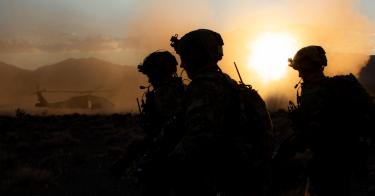When historians botch the job, it’s not a total loss. Something good can be drawn from even the worst military history. A skeptical reading of the past sharpens critical thinking skills, like how to pick out lumpers and splitters.
In an essay entitled “The Burden of Proof,” historian J. H. Hexter described what makes for bad history. First, there are the lumpers; they collect all the stuff that supports their conclusions and just ignore or dismiss the rest. The splitters, in contrast, fixate on a particular piece of evidence and, from that example, draw broad generalizations.
>>> Don’t Let Academia Destroy Military History
Lumpers and splitters have one thing in common: they act like a prosecutor who gets to decide which evidence both sides can present at trial. Consequently, both lumping and splitting yield the same results: deterministic and reductionist verdicts on the past, not critical analysis.
Cherry-picking the past gets peddled as history all the time. Take the recent case of the 1619 Project, awarded a Pulitzer Prize for its contention that America was founded on racism and remains racist to its core. People took this “history” as gospel until real historians started to point out how project creator Nikole Hannah-Jones had stacked the evidence to make her case. In the end, even Hannah-Jones acknowledged the “project” was not history. Instead, she claimed it was an “origins story.”
But real history is not like the Marvel Universe. You don’t get to just come up with a narrative that suits your fancy and then fill in the blanks with a few real-world facts and a lot of fancies. Playing fast and loose with history can lead to trouble. Witness the huge controversy that has erupted over teaching the 1619 Project in schools as legitimate history.
The consequences of faking it can be especially consequential for military history where professionals and decision-makers use their critical assessment of the past to inform future decision-making upon which our safety and security may depend.
Here is a case in point. In the interwar years, combat veteran and journalist Basil Liddell Hart (1895 to 1970) emerged as a prominent military theorist and war historian. He is most remembered as a proponent of the “indirect approach,” exploiting an enemy’s weakness or attacking at an unexpected place rather than challenging an enemy head-on.
Liddell Hart was both influential and controversial. He had a penchant for tidying up the past, ignoring the history he didn’t like and propping up the history he did, pressing his case for his own proposed military reforms and policies. He even added some “facts” to get some post-war writers to believe that the pioneers of blitzkrieg, German generals like Rommel and Guderian, were students of his “prewar theories.” None of this is to argue, that there is no place for reading Liddell Hart, but an assessment of his work also ought to include the critics who parsed his efforts at lumping and splitting.
S.L.A. Marshall, another journalist-turned-military-historian, gained great notoriety and influence for his work analyzing the dynamics of close combat. There was, for example, his conclusion that, in battle, only a small fraction of combatants actually use their weapons. Critics argue that Marshall was definitely splitting on this one, basing his conclusions on an unscientific sampling of personal interviews that he conducted.
>>> General Disaster—Meet the 6 Biggest Losers in Military History
Russell Weigley was another deeply influential military historian. In his sweeping assessment of U.S. military history, The American Way of War (1977), he described a penchant for operations that emphasize attrition and annihilation, massing a preponderance of power to pound a foe into submission.
Following the humiliating American defeat in Vietnam, many saw in Weigley’s writing a diagnosis of everything the U.S. military was doing wrong. Weigley, however, was one of the greatest lumpers of all time. His critics point to numerous instances where he either twisted history to fit his thesis, explained away incontrovertible facts, or just left them out. Rejecting Weigley’s simplistic interpretations, they argue that “appreciating a national way of war requires going beyond the narrative of operations, beyond debates on the merits of attrition or annihilation, firepower or mobility, military genius or collective professional ability.”
The great value of military history is not in the greatness of the historian, but in the rigorous critique of the sources and methods behind their histories and the sharp assessment of their analyses.
This piece originally appeared in The National Interest https://nationalinterest.org/blog/buzz/what-makes-military-history-great-182426




